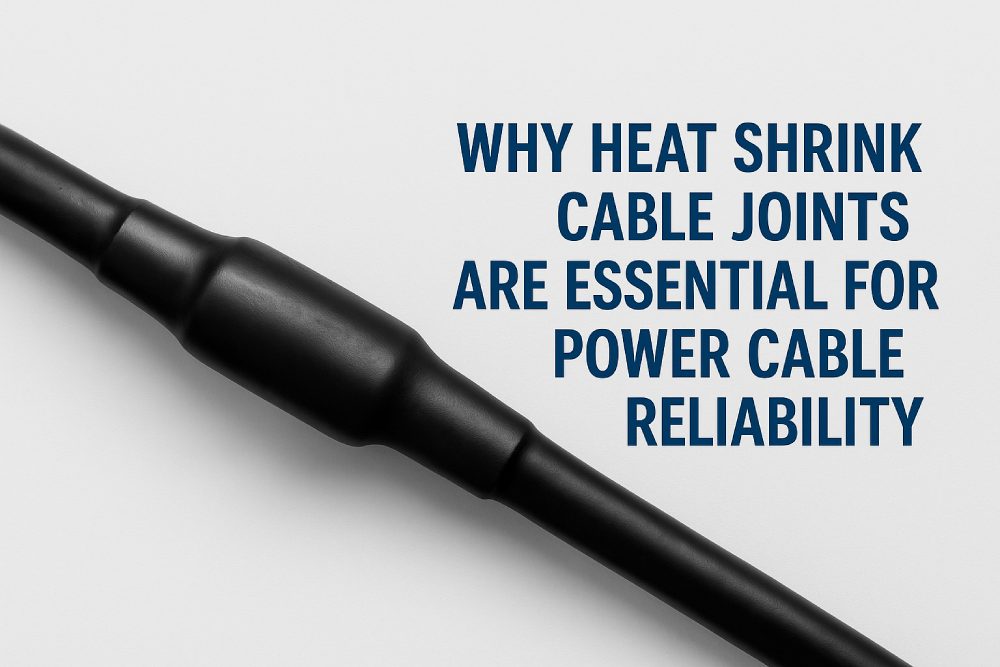In modern electrical and power distribution networks, cable joints play a vital role in ensuring continuous and safe energy transmission. One of the most reliable technologies used for connecting power cables is the heat shrink cable joint. Whether in underground installations, industrial power systems, or utility networks, these joints provide durable, weatherproof, and electrically stable connections.
This blog explores why heat shrink cable joints are essential for power cable reliability and how they benefit both low-voltage (LV) and medium-voltage (MV) systems.
What Are Heat Shrink Cable Joints?
Heat shrink cable joints are protective sleeves or jointing kits made from cross-linked polyolefin material. When heat is applied, the material shrinks tightly around the cable joint, creating a sealed, insulated, and mechanically robust connection.
These joints are designed for splicing or joining two or more power cables, ensuring electrical continuity and providing insulation, mechanical strength, and protection against environmental factors such as moisture, chemicals, and UV radiation.
Why Are Heat Shrink Cable Joints Important?
Power cable reliability is essential for reducing downtime, preventing faults, and maintaining safety. Heat shrink joints contribute significantly to this by offering the following advantages:
1. Excellent Electrical Insulation
One of the key roles of a cable joint is to ensure uninterrupted electrical transmission. Heat shrink materials provide high dielectric strength, minimizing the risk of short circuits, arcing, and corona discharge in high-voltage environments.
2. Strong Environmental Protection
Heat shrink joints form a tight, waterproof seal that protects the connection from dust, dirt, water ingress, corrosive substances, and other environmental threats. This is particularly crucial in underground and outdoor cable installations where exposure to harsh conditions is common.
3. Superior Mechanical Strength
Cable joints are often subject to mechanical stress, movement, and vibration. Heat shrink technology reinforces the joint, helping to prevent damage, cracks, or disconnection under pressure or over time.
4. Thermal Resistance and Flame Retardancy
In power distribution systems, cables can be exposed to fluctuating temperatures. Heat shrink materials are engineered to handle thermal stress and are inherently flame retardant, reducing fire hazards in sensitive installations.
5. Compact and Lightweight Design
Compared to traditional resin or cast jointing solutions, heat shrink joints are compact and easy to handle. This makes them ideal for space-constrained installations and applications where weight is a concern.
6. Ease of Installation and Maintenance
Heat shrink joints are relatively easy to install with the right tools and training. The process does not require heavy equipment, and once installed, they offer a long service life with minimal maintenance requirements.
Applications of Heat Shrink Cable Joints
Heat shrinkable cable joints are widely used across various sectors, including:
- Power Transmission and Distribution
- Industrial Plants and Factories
- Railway and Metro Electrification Projects
- Renewable Energy Installations (Solar and Wind)
- Telecom and Data Centers
- Oil & Gas and Petrochemical Facilities
Their versatility makes them suitable for both underground and overhead cabling, indoor switchgear, and even submarine cable systems in some cases.
Why Choose Yamuna Power Technologies?
At Yamuna Power Technologies, we understand that cable reliability is non-negotiable. We offer a complete range of heat shrink cable joints for LV and MV applications, engineered to meet international quality and safety standards.
Our products are:
- Tested for high electrical and mechanical performance
- Designed for harsh environmental conditions
- Easy to install with clear guidelines and support
- Backed by decades of expertise in cable jointing and accessories
Whether you’re building a new network or maintaining existing infrastructure, Yamuna Power is your trusted partner in cable jointing technology.
Ensure Long-Term Cable Reliability
In a world that relies heavily on uninterrupted power supply, heat shrink cable joints serve as more than just connectors. They act as essential protectors of the entire power system. Offering insulation, safety, durability, and long-term performance in a compact solution, they play a critical role in maintaining system reliability. If you are looking to enhance the performance and dependability of your power distribution network, investing in high-quality heat shrink joints from a trusted brand like Yamuna Power is a smart and reliable choice.

